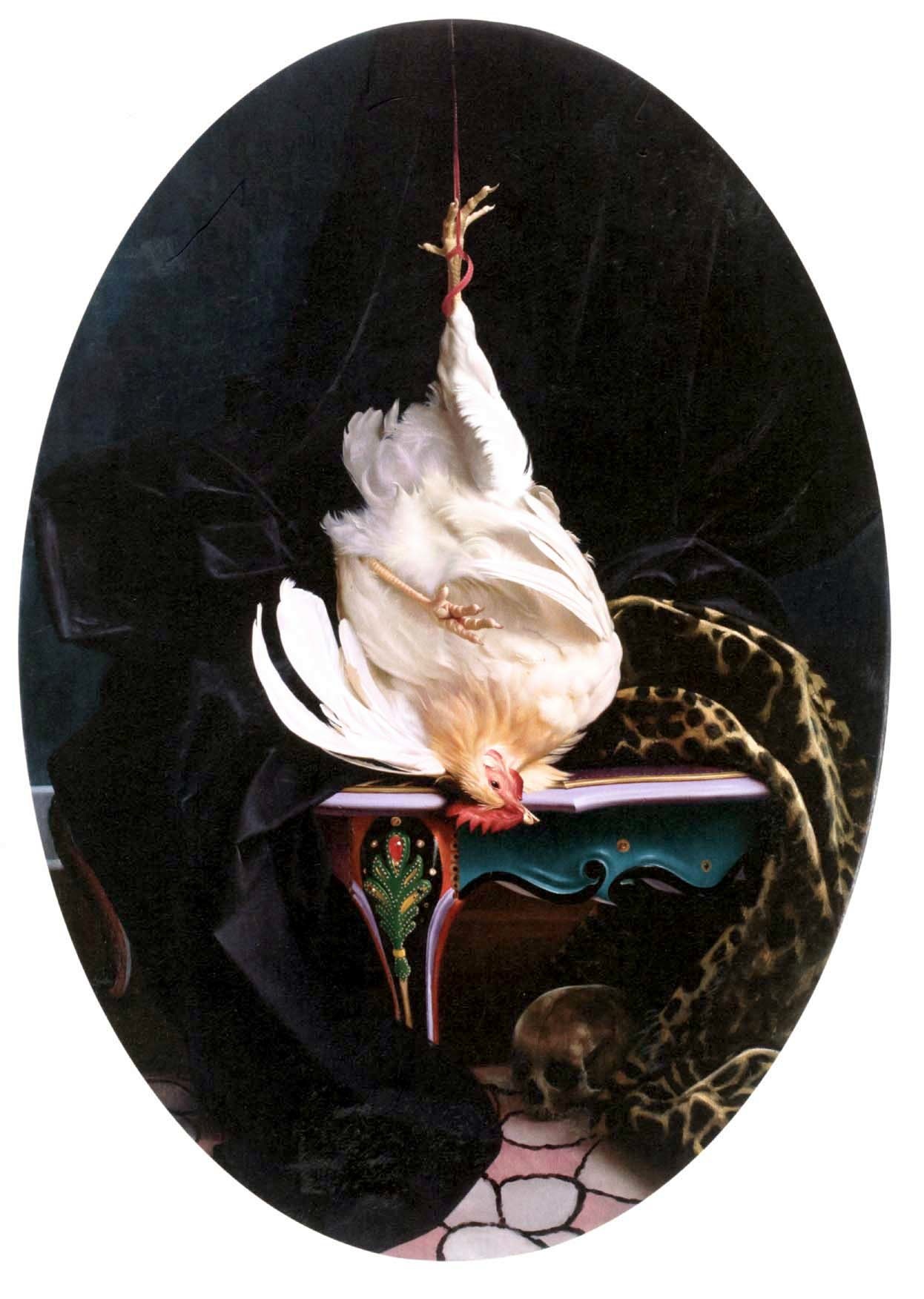A Painter of Modern Life

Eden Berlin and David Nicholson. Photo by Maxime Ballesteros
Â
Art world sophisticates are accustomed to dressing up smutty subject matter in conceptual jargon. They are at ease with the feverish style of Cecily Brown or Thomas Ruff’s cool pixels. But David Nicholson’s exquisite renderings of salacious conetent triggers serious contemplation. In contrast to the playboy posturing of other artists who cite porn as expample of cultural gratuity, the Montreal-born and Berlin-based painter’s background and approach bypass contemporary art’s concerns with fast-paced, trend-obsessed culture. Instead, the self-taught artist’s interests are historical, his relationship to paint is sensual, and his technique is confidently not au courant. Yet Nicholson has work in the same collections as Anselm Kiefer, George Condo, Edward Munch, Frank Stella, and the Chapman Brothers. He currently has work in “Sex Rules” at Vienna’s Apartment Draschan, Berlin’s “No Sugar for the Monkey” at the Stattbad, where he poses for photographer Maxime Ballesteros with his favorite model Eden Berlin. Here Nicholson (full disclosure: he’s a close friend of almost ten years) and I discuss his work while eating dinner and checking out chicks in Berlin’s Café Fleury.
ANA FINEL HONIGMAN: Besides liking beautiful women, is there another reason why you maintain the female body as your central subject matter?
DAVID NICHOLSON: People think I paint women because I am girl-crazy, but that makes no sense. It can’t make any sense. Everything I paint takes too long for my motives to be that light. It will take hours and hours, layers and layers, no matter what I am painting. I could be painting a leg or a knee and it doesn’t just get done. It is not light. It is not a passing fancy. It seems light but that is part of the illusion. If it is going to be exceptional, or something you really want to look at, then the effort to make it needs to be much more substantial. I have an idea for something that just gnaws away in my head and then I start wondering what I am going to do with it and how serious I am. If it stays with me and I keep coming back to it, then I can start to really address it, because it takes months to do what I do and I need to really mean it. I need to keep rediscovering it and renewing my interest in it as I progress. …and of course I pretty much like all girls too!
AFH: Do your compositions reveal themselves to you as fully-formed, mapped ideas?
DN: No, never. It always starts as a little idea and then I build around it and fleshing it out until it all makes sense together. The connections and associations all need to develop. It is the same for music or writing or anything. It doesn’t emerge fully-formed. (LEFT: THE PORN STAR, 2003)
AFH: How do you respond to viewers’ responses to your work?
DN: I don’t know whether this happens to me more than other artists, but it completely confounds me when people tell me, and they tell me often, what I should do.
AFH: Do people often do that?
DN: People will tell me, “You should paint this,” or ask, “Why don’t you paint this other thing?”
AFH: I just tell you what I think you shouldn’t paint.
DN: It’s the same thing really.
AFH: No it isn’t.
DN: It is. Really. What I find interesting about that is that there seems to be an assumption in those suggestionsâ??and I am just trying to make sense of it, because I can’t make sense of it any other wayâ??that I can decide what to paint the same way that I decide what shoes to wear. That is not true. It’s not like wanting to eat a cheeseburger for lunch.
AFH: Do you think people might make suggestions more as requests? They want a certain thing to exist in the world, which is a David Nicholson rendering of whatever they think deserves your talent.
EROS, 2006
Â
DN: I think part of it is, “If I could do that, then I’d paint this…”
AFH: Or maybe they just want your realization of their idea to exist in the world.
DN: Maybe. I met an artist recently who told me, “If I had your talent, I would only be painting war scenes.”
AFH: That sounds like exactly the right way to approach you and articulate what she means.
DN: It is. But I think it misses something because maybe if she could paint like how I paint, she would only paint chickens or trees or something utterly surprising, even to her. There are people who only want to paint trees. Maybe, if she reached that point then she would discover that she only wanted to paint trees or chickens or chairs.
AFH: You mean that then she’d stop thinking selflessly about how paintings as arresting as yours should address the horrors of war, and realize she could only devote herself to what interested her enough to fuel that process?
DN: Right. And what interests her might really be chickens. (RIGHT: OHNE TITEL, 2007)
AFH: And you’re interested in women…
DN: I just know that when I look at a figure, I want to engage with that. I see a figure and I think that there is something I want to render. I want to make that flesh like flesh and that form like that form. And I want to say something with it. And I don’t just paint women.
AFH:Â No, you paint stuff around the women.
DN: Right, but what about the skulls? I paint skulls repeatedly. I just keep coming back to them. I realize the subject has implications and attracts me. No one says, “I’m skull crazy!”






